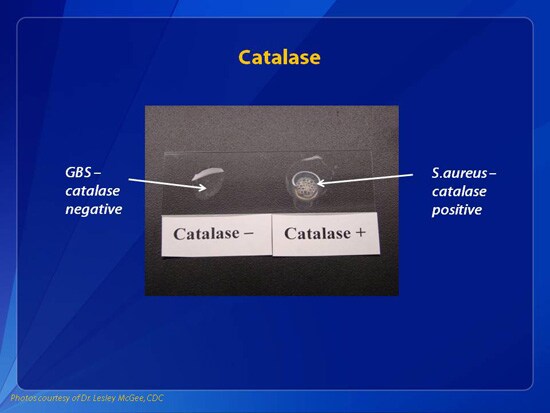CLINICAL MICROBIOLOGY
BIOCHEMICAL TESTS TO IDENTIFY BACTERIA:
While several commercial systems for identifying
bacteria are available, these are often difficult to
obtain or too expensive to use in developing countries.
This subunit includes a range of conventional
biochemical tests and tablet identification tests which
most district laboratories will be able to perform.
The following tests are described in this part:
Test Purpose
Beta-glucuronidase To identify E. coli
Bile solubility: To differentiate S. pneumoniae from other alpha-haemolytic streptococci
Catalase: To differentiate Staphylococci from Streptococci
While several commercial systems for identifying
bacteria are available, these are often difficult to
obtain or too expensive to use in developing countries.
This subunit includes a range of conventional
biochemical tests and tablet identification tests which
most district laboratories will be able to perform.
The following tests are described in this part:
Test Purpose
Beta-glucuronidase To identify E. coli
Bile solubility: To differentiate S. pneumoniae from other alpha-haemolytic streptococci
Catalase: To differentiate Staphylococci from Streptococci
Citrate utilization :To differentiate Enterobacteria
Coagulase: To identify S. aureus
DNA-ase To help identify S. aureus
Indole To differentiate Gram
negative rods, particularly
E. coli
Litmus milk To help identify
decolorization Enterococcus and some
clostridia
Lysine decarboxylase To assist in the
identification of
salmonellae and shigellae
Oxidase To help identify Neisseria,
Pasteurella, Vibrio,
Pseudomonas
Urease To help identify Proteus,
Morganella, Y. enterocolitica, H. pylori
Catalase Test: This test is used to differentiate those bacteria that
produce the enzyme catalase, such as staphylococci,
from non-catalase producing bacteria such as streptococci.
Catalase acts as a catalyst in the breakdown of hydrogen
peroxide to oxygen and water. An organism is tested for
catalase production by bringing it into contact with hydrogen
peroxide. Bubbles of oxygen are released if the organism is a
catalase producer. The culture should not be more than 24 hour old culture.
Please visit these links:
en.wikipedia.org/wiki/Catalase
www.microbelibrary.org/library/...test/3226-catalase-test-protocol
www.vumicro.com › Home › Reference Books › Biochemical Tests
learn.chm.msu.edu/vibl/content/catalase.htm
Cited By Kamal Singh Khadka
Assistant Professor in PU, Regional college Of Science & Technology, PNC, Novel Academy, Pokhara
Coagulase: To identify S. aureus
DNA-ase To help identify S. aureus
Indole To differentiate Gram
negative rods, particularly
E. coli
Litmus milk To help identify
decolorization Enterococcus and some
clostridia
Lysine decarboxylase To assist in the
identification of
salmonellae and shigellae
Oxidase To help identify Neisseria,
Pasteurella, Vibrio,
Pseudomonas
Urease To help identify Proteus,
Morganella, Y. enterocolitica, H. pylori
Catalase Test: This test is used to differentiate those bacteria that
produce the enzyme catalase, such as staphylococci,
from non-catalase producing bacteria such as streptococci.
Catalase acts as a catalyst in the breakdown of hydrogen
peroxide to oxygen and water. An organism is tested for
catalase production by bringing it into contact with hydrogen
peroxide. Bubbles of oxygen are released if the organism is a
catalase producer. The culture should not be more than 24 hour old culture.
Please visit these links:
en.wikipedia.org/wiki/Catalase
www.microbelibrary.org/library/...test/3226-catalase-test-protocol
www.vumicro.com › Home › Reference Books › Biochemical Tests
learn.chm.msu.edu/vibl/content/catalase.htm
Cited By Kamal Singh Khadka
Assistant Professor in PU, Regional college Of Science & Technology, PNC, Novel Academy, Pokhara



Comments